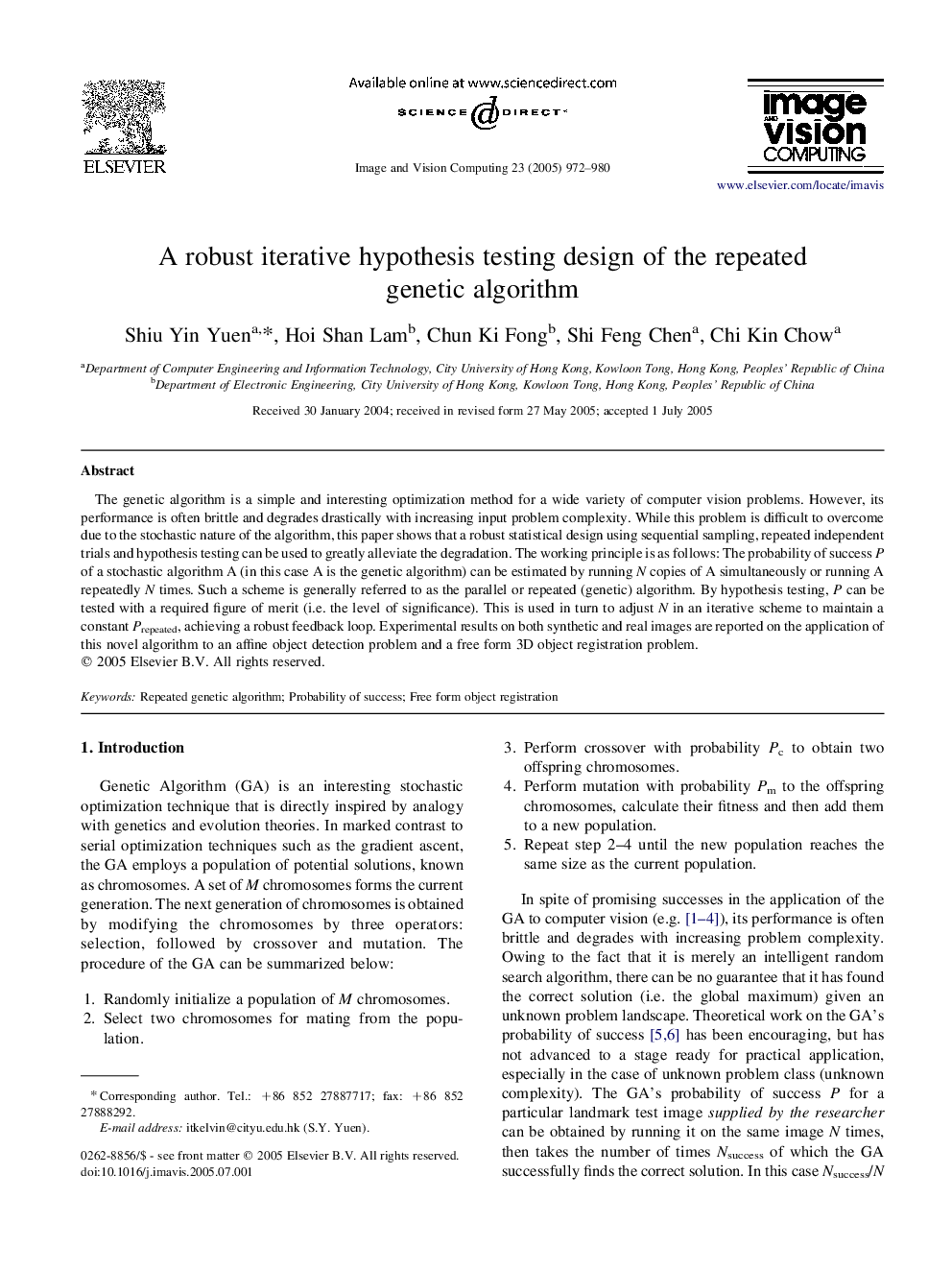| Article ID | Journal | Published Year | Pages | File Type |
|---|---|---|---|---|
| 10359516 | Image and Vision Computing | 2005 | 9 Pages |
Abstract
The genetic algorithm is a simple and interesting optimization method for a wide variety of computer vision problems. However, its performance is often brittle and degrades drastically with increasing input problem complexity. While this problem is difficult to overcome due to the stochastic nature of the algorithm, this paper shows that a robust statistical design using sequential sampling, repeated independent trials and hypothesis testing can be used to greatly alleviate the degradation. The working principle is as follows: The probability of success P of a stochastic algorithm A (in this case A is the genetic algorithm) can be estimated by running N copies of A simultaneously or running A repeatedly N times. Such a scheme is generally referred to as the parallel or repeated (genetic) algorithm. By hypothesis testing, P can be tested with a required figure of merit (i.e. the level of significance). This is used in turn to adjust N in an iterative scheme to maintain a constant Prepeated, achieving a robust feedback loop. Experimental results on both synthetic and real images are reported on the application of this novel algorithm to an affine object detection problem and a free form 3D object registration problem.
Keywords
Related Topics
Physical Sciences and Engineering
Computer Science
Computer Vision and Pattern Recognition
Authors
Shiu Yin Yuen, Hoi Shan Lam, Chun Ki Fong, Shi Feng Chen, Chi Kin Chow,
